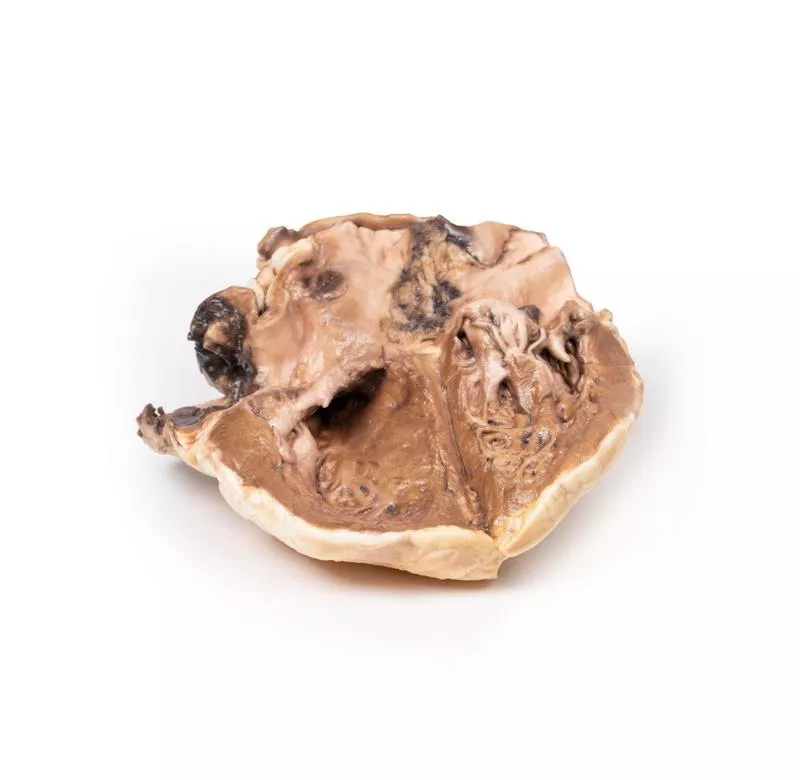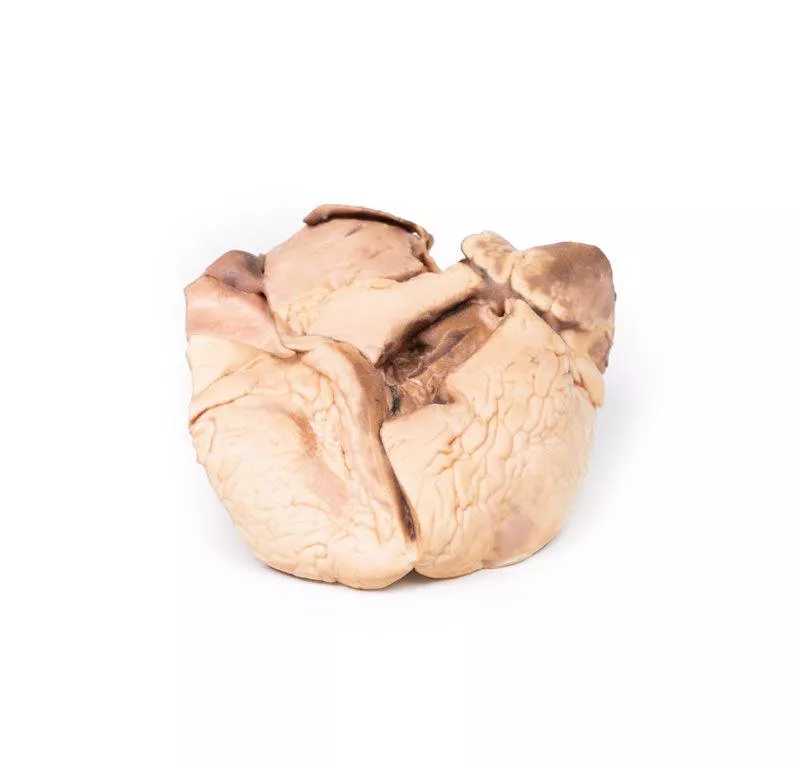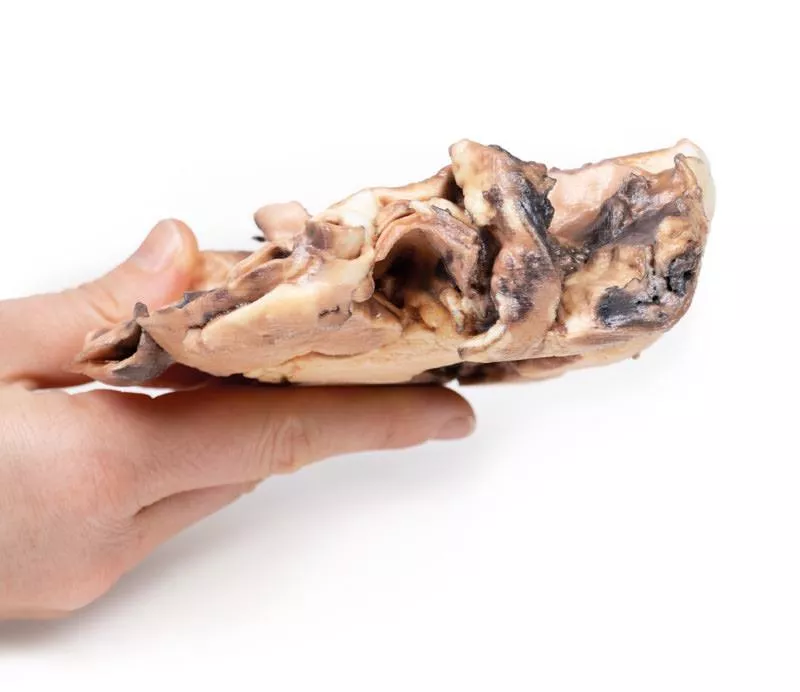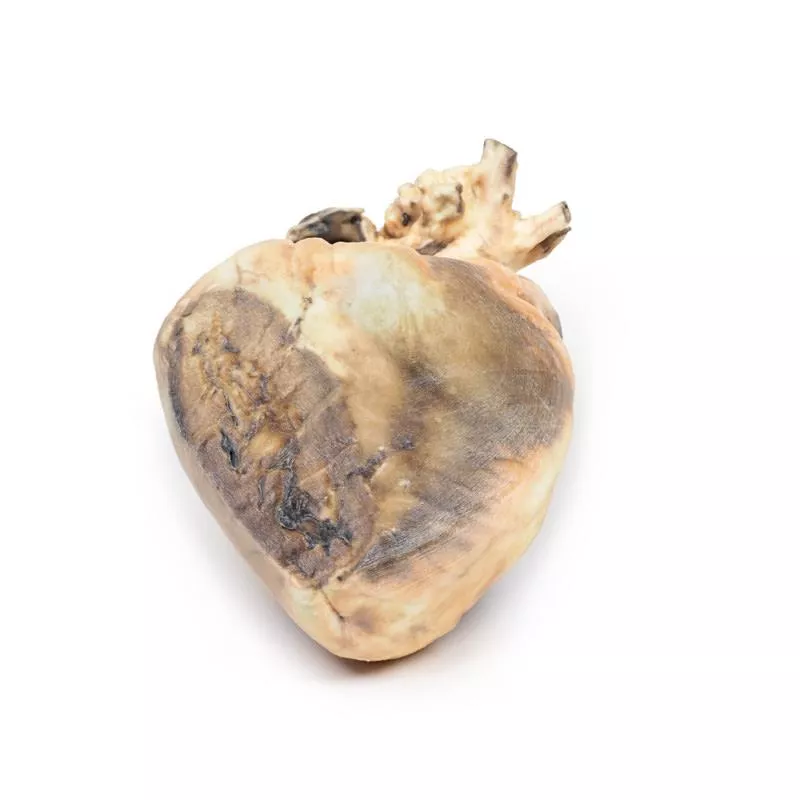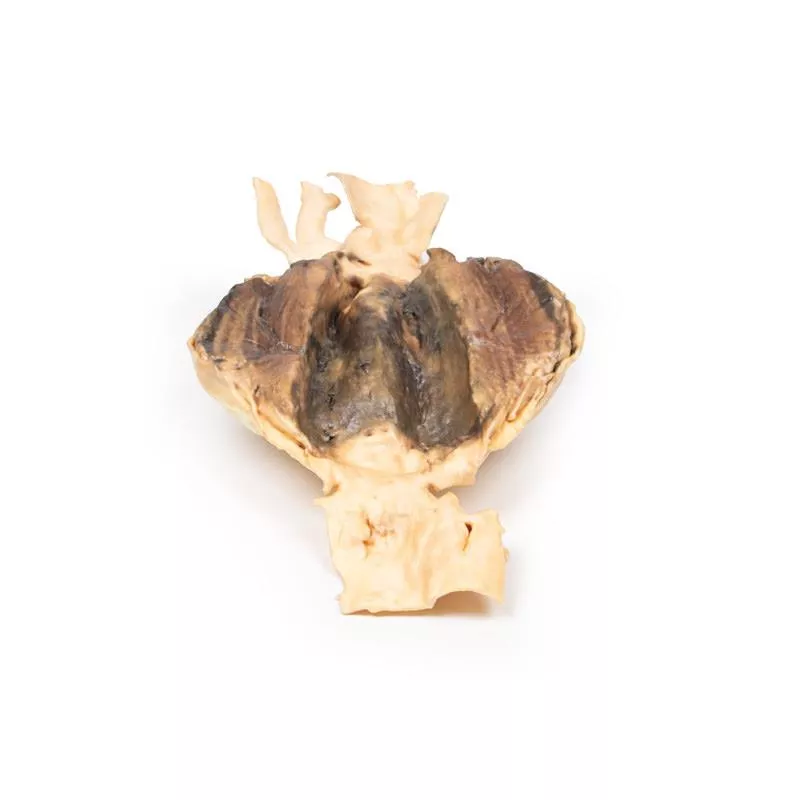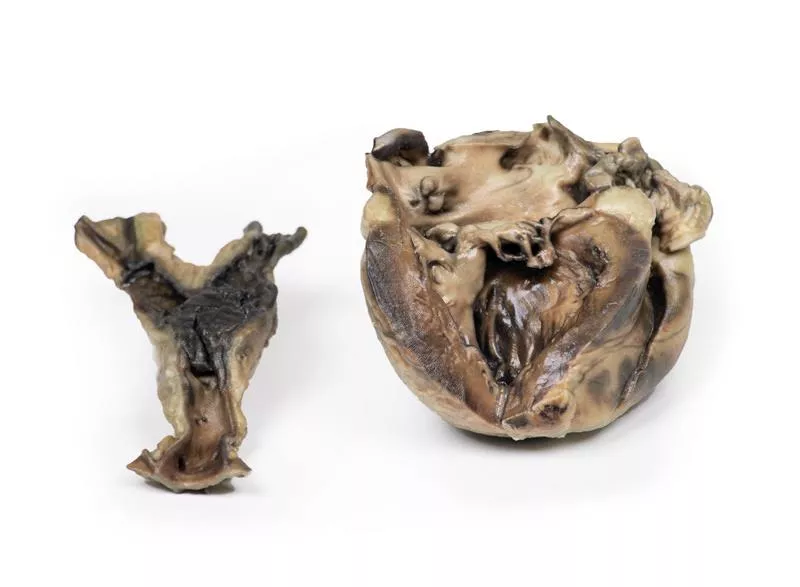Produktinformationen "Rheumatic endocarditis"
Klinische Vorgeschichte
Eine 52-jährige Frau klagte über zunehmende Atemnot. Ihre Vorgeschichte umfasste Fieber mit wandernden Gelenkschmerzen in der Kindheit nach einem Halsinfekt. Bei der Untersuchung war sie zyanotisch, mit Vorhofflimmern, erhöhtem Jugularvenendruck, einem pan-systolischen Herzgeräusch am Apex, Hepatomegalie und Ödemen. Sie erhielt Digoxin, Furosemid und Penicillin, verstarb jedoch nach einem Herzstillstand.
Pathologie
Das eröffnete Herz zeigt den linken Vorhof und die Kammer. Die Mitralklappe ist verdickt. Die Wand des linken Vorhofs enthält Blut und Fibrin, und im linken Vorhofohr befindet sich ein Thrombus durch Vorhofflimmern. Ein Wandthrombus und unregelmäßige Endokardverdickungen – die sogenannten MacCallum-Plaques – sind charakteristisch.
Weitere Informationen
Die Befunde sprechen stark für eine rheumatische Fiebererkrankung, eine autoimmune Folge einer unbehandelten Streptokokkeninfektion. Sie betrifft oft Herz, Gelenke, Haut und Gehirn. Wiederholte Herzbeteiligungen führen zur chronischen rheumatischen Herzkrankheit, meist mit Mitralklappenverengung durch Fibrose. Kennzeichnend sind Aschoff-Knoten. Mit der Zeit dehnt sich der linke Vorhof aus, was zu Vorhofflimmern und Wandthromben führt und schließlich eine schwere Herzinsuffizienz zur Folge haben kann.
Eine 52-jährige Frau klagte über zunehmende Atemnot. Ihre Vorgeschichte umfasste Fieber mit wandernden Gelenkschmerzen in der Kindheit nach einem Halsinfekt. Bei der Untersuchung war sie zyanotisch, mit Vorhofflimmern, erhöhtem Jugularvenendruck, einem pan-systolischen Herzgeräusch am Apex, Hepatomegalie und Ödemen. Sie erhielt Digoxin, Furosemid und Penicillin, verstarb jedoch nach einem Herzstillstand.
Pathologie
Das eröffnete Herz zeigt den linken Vorhof und die Kammer. Die Mitralklappe ist verdickt. Die Wand des linken Vorhofs enthält Blut und Fibrin, und im linken Vorhofohr befindet sich ein Thrombus durch Vorhofflimmern. Ein Wandthrombus und unregelmäßige Endokardverdickungen – die sogenannten MacCallum-Plaques – sind charakteristisch.
Weitere Informationen
Die Befunde sprechen stark für eine rheumatische Fiebererkrankung, eine autoimmune Folge einer unbehandelten Streptokokkeninfektion. Sie betrifft oft Herz, Gelenke, Haut und Gehirn. Wiederholte Herzbeteiligungen führen zur chronischen rheumatischen Herzkrankheit, meist mit Mitralklappenverengung durch Fibrose. Kennzeichnend sind Aschoff-Knoten. Mit der Zeit dehnt sich der linke Vorhof aus, was zu Vorhofflimmern und Wandthromben führt und schließlich eine schwere Herzinsuffizienz zur Folge haben kann.
Erler-Zimmer
Erler-Zimmer GmbH & Co.KG
Hauptstrasse 27
77886 Lauf
Germany
info@erler-zimmer.de
Achtung! Medizinisches Ausbildungsmaterial, kein Spielzeug. Nicht geeignet für Personen unter 14 Jahren.
Attention! Medical training material, not a toy. Not suitable for persons under 14 years of age.



















